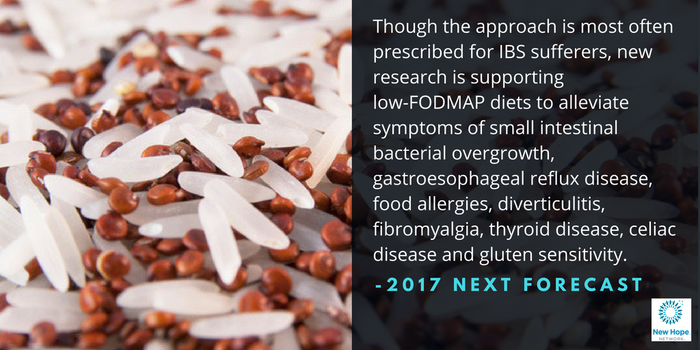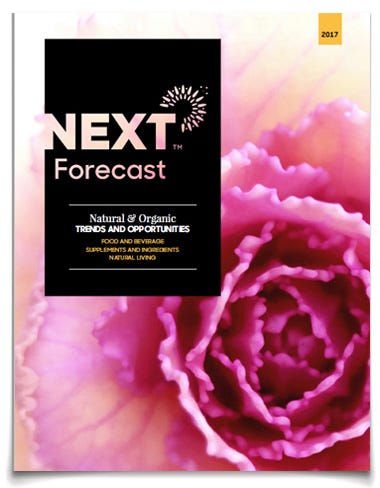The FODMAP opportunity [NEXT Forecast 2017]The FODMAP opportunity [NEXT Forecast 2017]
Low-FODMAP diets have been used as nutrition therapy for sufferers of Irritable Bowel Syndrome for years. But some experts see these fermentable carbohydrates behind a number of contemporary digestive woes, including gluten intolerance.
December 16, 2016
![The FODMAP opportunity [NEXT Forecast 2017] The FODMAP opportunity [NEXT Forecast 2017]](https://eu-images.contentstack.com/v3/assets/blt09e5e63517a16184/bltf364bb592a463bdc/64e87c259a0df2ee78495f9a/fodmaps-NEXT-Forecast.jpg?width=1280&auto=webp&quality=95&format=jpg&disable=upscale)
The following is an excerpt from the NEXT Forecast, an insider’s guide to where the natural products market is now—and where it’s headed. Drawing from proprietary data sets, expert interviews, in-market case studies and the Natural Products Expos, the NEXT Forecast is the industry’s leading source of forward-looking insights. Learn about this and many other in-market trends laddering up to dominant macro forces in this report.
Digestive-related conditions affect more than 70 million people in the United States and account for 48.3 million ambulatory care visits each year. In 2015 and 2016, the marketplace responded to this rising group of conditions by formulating products that promote good digestion via probiotics, prebiotics, fermented foods and supplements, wheat and gluten avoidance, and gut-friendly meal plans. One such approach is an elimination plan called the Low-FODMAP Diet, developed in 1999 by registered dietitian Dr. Sue Shepherd.
FODMAP stands for fermentable oligosaccharides, disaccharides, monosaccharides and polyols, which are groups of short-chain carbohydrates and sugar alcohols that contribute to digestive symptoms in patients with IBS.
FODMAP-containing foods tend to overfuel gut bacteria. The foods are poorly absorbed in the small intestine and pass into the large intestine, where they’re readily fermented by gut bacteria (contributing to gas production) or attract water into the large intestine (causing bloating, abdominal pain or diarrhea).

NEXT Forecast 2017 opportunity:
Some researchers believe the gray zone of non-celiac gluten sensitivity—for which there is no reliable test yet—has wrongly been focused on gluten-containing foods when FODMAP-containing foods may be the culprit. The low-FODMAP diet is not a gluten-free diet, but eschews foods high in wheat or fructans. Wheat contains fructans, but gluten does not. Companies providing gut-healing solutions have an opportunity to formulate products that are both gluten-free and low in FODMAPs.

Get the full NEXT Forecast to see how nutrition science, along with 13 other macro forces, will shape the future of the natural products industry.
nextforecast.com | Order now
You May Also Like



